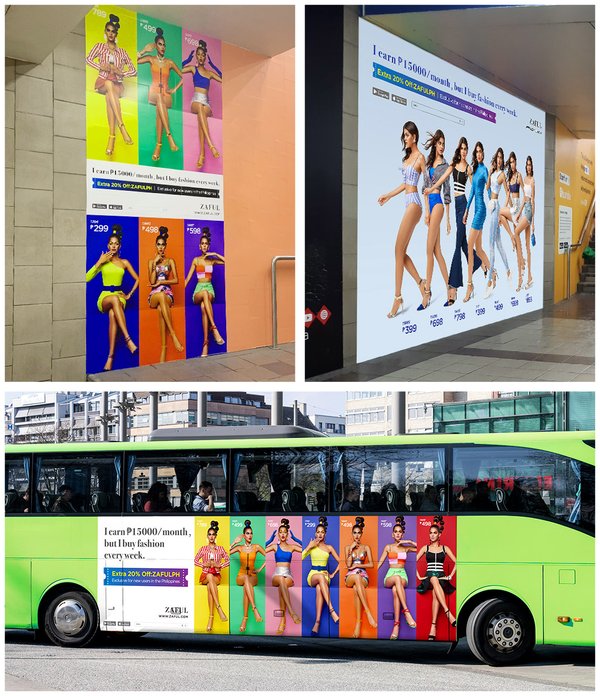Transit Advertising Philippines: An Ingenious Method to Advertise
Transit Advertising Philippines: An Ingenious Method to Advertise
Blog Article
Comprehending the Duty of Transportation Marketing in Enhancing Brand Presence and Consumer Engagement
Transit advertising and marketing has become a crucial component in the advertising and marketing landscape, offering special opportunities for brand names to boost their exposure and involve consumers successfully. With the capacity to get to a captive and diverse target market during their day-to-day commutes, these marketing strategies are not simply regarding exposure; they are about producing meaningful connections with prospective customers. As we check out the diverse advantages and cutting-edge strategies within transportation marketing, it ends up being vital to take into consideration how these aspects collectively influence customer understanding and behavior, raising questions about their long-term effect on brand loyalty.
Meaning of Transportation Advertising
Transit advertising and marketing refers to the technique of advertising items, solutions, or brands through promotions positioned in and around mass transit systems. This form of advertising and marketing encompasses a selection of positionings, consisting of posters on buses and trains, electronic screens at transit terminals, and wraps on the exterior of cars. It aims to reach a diverse audience, capitalizing on the high foot traffic linked with public transit.
Transportation marketing is purposefully placed to catch the attention of travelers, who usually invest substantial time waiting or taking a trip. By integrating promotions right into the everyday routines of individuals, brands can create a lasting impact and foster brand name acknowledgment. The medium is especially efficient in urban settings, where mass transit is a primary setting of traveling.
In addition, transportation advertising can help with localized targeting, allowing organizations to reach specific demographics based upon transportation routes and terminal locations. As city populations grow and using public transport increases, this marketing method has actually gained importance as a crucial component of integrated marketing approaches. The dynamic nature of transit advertising, integrated with its capability to involve consumers in a restricted environment, underscores its value in modern advertising practices.
Advantages of Transportation Marketing
The efficiency of transportation marketing hinges on its ability to deliver a wide variety of advantages to brand names seeking to improve presence and involvement. Among the main advantages is the comprehensive reach it supplies; transportation ads can properly target diverse demographics across metropolitan areas, getting to both pedestrians and travelers alike. This wide exposure dramatically enhances brand name recognition.
Another benefit is the high regularity of perceptions. As transit automobiles follow well-known routes and quit at numerous areas, they produce repetitive direct exposure that strengthens brand messages. This frequency promotes familiarity, which is crucial in consumer decision-making.
Transportation advertising and marketing is additionally cost-efficient compared to other media platforms. Offered its extensive reach and possibility for high impacts, brands commonly experience a reduced cost per thousand perceptions (CPM), maximizing their advertising and marketing budget plan.
In addition, transit advertisements can create a feeling of neighborhood connection. By straightening with regional transportation systems, brand names can reverberate with local audiences and cultivate a sense of local satisfaction. This local approach improves brand loyalty and engagement, making transit marketing an engaging selection for companies intending to solidify their presence in the market.

Efficient Methods for Transportation Projects
To optimize the effect of transit projects, brand names ought to leverage critical planning and execution tailored to their target audience. First, determining the demographic features of the target market using public transportation is important. This allows brand names to develop individualized messaging that resonates with possible clients.
Next, picking the right transit mediums is necessary. Whether utilizing bus wraps, metro posters, or digital displays, each medium has special advantages that can enhance exposure. As an example, dynamic visuals on bus wraps can stand out, while digital ads can be upgraded frequently to show timely promos.
In addition, incorporating a cohesive branding strategy across transit systems makes certain uniformity and strengthens the brand name's identification. Using unforgettable taglines and distinctive styles will reinforce brand recall among commuters.
By utilizing these techniques, brands can effectively harness the possibility of transportation advertising and marketing, fostering better understanding and link with their target audience. Ultimately, a well-executed transit campaign can drive considerable development in brand name exposure and consumer engagement.

Gauging Impact and Involvement
In reviewing the efficiency of transportation marketing campaign, exact measurement of effect and engagement is crucial for brand names looking for to optimize their advertising approaches. Metrics such as reach, regularity, and impressions offer fundamental data to evaluate presence. Examining these variables helps figure out how several potential customers are exposed to the ads throughout their daily commutes.
Interaction can be additional evaluated via customer interactions, such as site web traffic, social networks points out, and straight actions to calls-to-action included in the ads. Making use of devices like QR codes or distinct Links can assist in tracking of customer actions straight linked to transit projects. Studies and comments systems also function as valuable methods you can try here to gather qualitative information on customer assumptions and recall of the advertisement.
Furthermore, progressed analytics and attribution designs can correlate transit exposure with subsequent acquiring behavior, providing insights right into the return on investment. By employing an extensive method that combines qualitative and quantitative actions, brand names can establish a nuanced understanding of their transportation advertising impact. Inevitably, this data-driven technique enables brand names to fine-tune their campaigns, ensuring they resonate successfully with target audiences and improve overall brand name exposure.
Instance Research Studies of Successful Projects
Successful transportation advertising projects act as engaging instances of just how effective strategies can raise brand exposure and engagement. Transit Advertising Philippines. One remarkable situation is the "I Love New york city" project, which changed the city's image and brought in countless tourists. By using metro ads, signboards, and bus wraps, the campaign created a strong, cohesive brand name identity, resulting in a substantial uptick in tourism and regional service patronage
Another excellent project is Coca-Cola's "Share a Coke" campaign, which leveraged transportation advertising and marketing to personalize the brand name experience. By including preferred names on promotional materials throughout different transportation systems, Coca-Cola promoted a much deeper emotional link with customers, motivating them to share their experiences on social media.
Furthermore, the "Got Milk?" project successfully made use of mass transit advertisements to get to a broad target market, strengthening the message of the relevance of milk try this site in a well balanced diet plan. The project saw a quantifiable rise in milk usage in target demographics.
These case studies show that when carried out attentively, transit advertising can substantially improve brand name presence, foster consumer involvement, and drive measurable results, showing its essential function in modern marketing techniques. - Transit Advertising Philippines
Final Thought
Finally, transit advertising functions as a vital device for boosting brand name presence and promoting customer interaction. By utilizing purposefully put ads within public transport systems, brands can successfully get to diverse audiences and reinforce recognition through consistent exposure. The implementation of targeted messaging and innovative approaches further intensifies the influence of transit projects. Eventually, the capacity to measure interaction and evaluate effective study emphasizes the performance of transit advertising in driving brand name loyalty and customer interactions.
Transit advertising has emerged as a pivotal component in the advertising landscape, supplying unique chances for brand names to boost their presence and involve consumers successfully.In addition, transportation marketing can facilitate localized targeting, permitting services to reach certain demographics based on transit routes and terminal places.In evaluating the efficiency of transportation marketing campaigns, precise dimension of influence and involvement is vital for brands seeking to enhance their advertising methods.Effective transit advertising and marketing campaigns serve as engaging examples of exactly important source how effective methods can raise brand visibility and engagement.In verdict, transit advertising and marketing serves as a vital device for improving brand name presence and cultivating consumer involvement.
Report this page